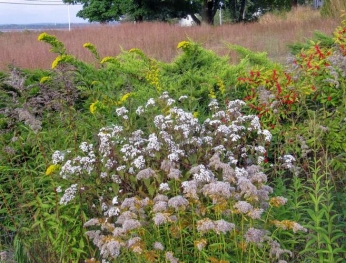
Some experts call it our single most valuable perennial plant for pollinators, but many people still try to eradicate goldenrod because they think it causes allergies.
The real source of sneezes is likely to be ragweed or other wind-pollinated plants. But old stories die hard.
In fact, pollen sticks to goldenrod. "Goldenrods are a tremendous resource for a wide diversity of insects, including both specialist and generalist bees,” says Kimberly Stoner, Ph.D., an associate scientist at the Connecticut Agricultural Experiment Station who specializes in bees.
But are they good landscape plants? Let us count the ways: New England has at least eight native species in the genus (Solidago spp.), as different from one another in some ways as roses from geraniums. What they have in common is that they are vigorous self-seeders, come back year after year, offer brilliant color, and rarely need supplemental water. Fertilizer? Forget it.
For a review of ornamental goldenrod varieties suitable to gardens, see "For Gardens and Pollinators, Goldenrod Is Pure Gold." at Zip06/TheDay If you have trouble with the link, download the print version below.
| Attachment | Size |
|---|---|
| 688.11 KB |
